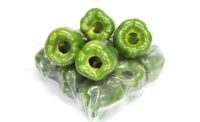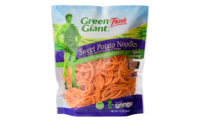Health and convenience will be the leading drivers of increased demand
for fresh vegetables in the next five years, according to a report
released from Rabobank's Food & Agribusiness Research and Advisory group.
Health and convenience will be the leading drivers of increased demand for fresh vegetables in the next five years, according to a report released from Rabobank's Food & Agribusiness Research and Advisory (FAR) group, Fresno, Calif. The report cites the growing U.S. health crisis and consumer desire for easy-to-prepare meals among the reasons.
The report notes that even though Americans are concerned about the U.S. obesity epidemic, the stand-alone marketing of a "healthy benefit" to mainstream consumers isn't enough to increase consumption of fresh vegetables, evident by the overall flat consumption rate of fresh vegetables in recent years. The report recommends that produce firms put more emphasis on creating value-added products that are not only healthy, but easy to prepare.
"As grower-shipper processors look to increase sales of fresh vegetables, we believe the solution really lies with the concept of healthy convenience," says the report's author, Karen Halliburton Barber, assistant vice president and senior agricultural analyst for FAR. "The idea is to give consumers the best of both worlds-the healthfulness of fresh vegetables and the convenience of processed foods."
The report references a recent argument posed by the New York Times, stating that fresh, unprocessed, so-called “real food” is no more expensive than processed “junk food.” Rather, the deterrent from healthy food eating among mainstream consumers has been the inconvenience of time it takes to prepare the food.
Furthermore, the report recommends that grower-shipper processors invest in more product differentiation, including producing vegetables with naturally enhanced micronutrient content and bolder flavors, offering more ethnic vegetables and flavorings and catering to local and regional appeal. The report identifies that to achieve this differentiation, some producers will likely need to change their product mix and adjust their production and sourcing partnerships, including recognizing the continuing rising popularity of private labels in a post-recession world.
"As stores develop and expand their own private label offerings, it creates a challenge for established brands," says Barber. "Though some leading branded processors are supplying private labels, there's a risk of diminishing their own heavily invested brands."
Rabobank Study: Value-Added Fresh Vegetables Positioned for Growth
Looking for a reprint of this article?
From high-res PDFs to custom plaques, order your copy today!





